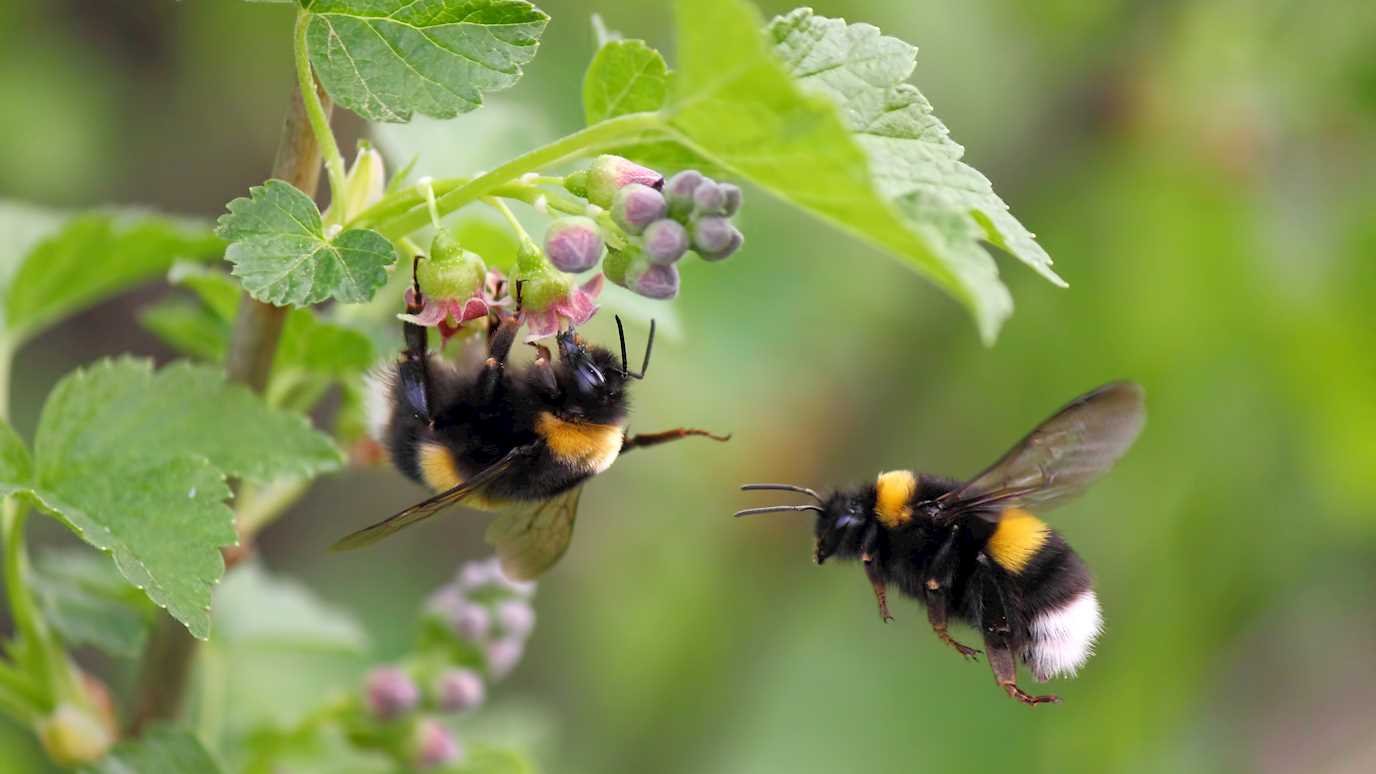A large five-year European-wide research project, led by academics at Royal Holloway has confirmed that commonly used pesticides in agriculture are still significantly harming bumble bees, with colonies growing less and producing fewer offspring.

The report is from a pan-European project called PoshBee, led by Professor Mark Brown from the Department of Biological Sciences at Royal Holloway. It comes at a crucial time when the European Parliament recently voted against reducing pesticide use, as part of its Green Deal climate law aimed at cutting greenhouse gas emissions within the EU by 55% by 2030.
This study was conducted in 106 sites across eight European countries, with fieldwork in the UK led by Dr Deepa Senapathi and Professor Simon Potts from the University of Reading. It shows that, despite tightened pesticide regulations, there is much to be done to support the health of bumble bees in the wild.
The findings, published in the journal Nature, reveal that, despite the world's most rigorous risk assessment process, the use of approved pesticides in European agricultural landscapes, including the UK, still negatively affects non-target organisms, such as bees. This significantly reduces the colony performance of bumble bees: a key wild and commercial pollinator.
The report supports the need for sustainability goals to reduce pesticide use and risk – critical challenges highlighted at the Convention on Biological Diversity’s COP 15 meeting and a vital part of the European Farm to Fork strategy – with anticipated benefit to bees and, potentially, their pollination services.
Professor Mark Brown from Royal Holloway said: “With COP28 soon upon us, our research highlights there is still much work to be done in terms of mitigating the effects of approved pesticides on pollinators, not just in the UK, but across Europe.
“The scale of this work provides a step-change in our understanding of the impact of agrochemicals on pollinator health, but we need to act now. A strong, and governmentally supported move towards integrated pest management in agricultural systems across the globe, resulting in a reduction in pesticide use, would dramatically improve the health of wild pollinators, and broader biodiversity.
“Bumble bees, and other animals, do not recognise international borders, and to protect them, we need to take a similarly international approach, to make sure their pollinating colonies survive, nature thrives and in turn, so does the food chain we all rely on.”
Dr. Charlie Nicholson, co-lead author and researcher at Lund University, said: “When you step outside the laboratory, a challenge of pesticide research is to capture real-world practices at organism-relevant scales.
“With the largest experimental field deployment of any pollinator, we see that bumble bees encounter multiple pesticides in agricultural landscapes, and at levels that reduce their success in the field. On top of this, pesticides do more harm in landscapes with less natural habitat.”
Dr. Jessica Knapp, co-lead author, now at Trinity College Dublin, added: “The data shows us how bumble bees perform when we use fewer pesticides, producing about 50% more offspring. These ‘healthier’ colonies help us generate a baseline to show that 60% of our bumblebee colonies would fail proposed pollinator protection goals.”
Prof. Jane Stout at Trinity College Dublin and fieldwork coordinator, added, “This work was possible because of the collaboration and dedication of the transdisciplinary field teams in each country and the partnership with the labs that conducted the common analyses. Researchers, beekeepers, and farmers worked together to implement common protocols to collect these unique data.”
Dr. Marie-Pierre Chauzat at ANSES, who carried out the metric for pesticide analysis, showed colony performance was related to pesticide risk in pollen.
Dr Chauzat said: “The analyses benefited from the coordinated work of five labs for pesticide screening and pollen identification – data that will be publicly available. Coordination was the keyword for generating this dataset.”
Dr. Maj Rundlöf, the senior author and researcher at Lund University, concluded: “Our work supports the development of landscape-based environmental risk assessment and post-approval monitoring of bees’ pesticide exposure and effects.
“Our approach is promising for this, but there is also a need to better understand how the wider pollinator community is exposed to and potentially impacted by pesticide use.”
























